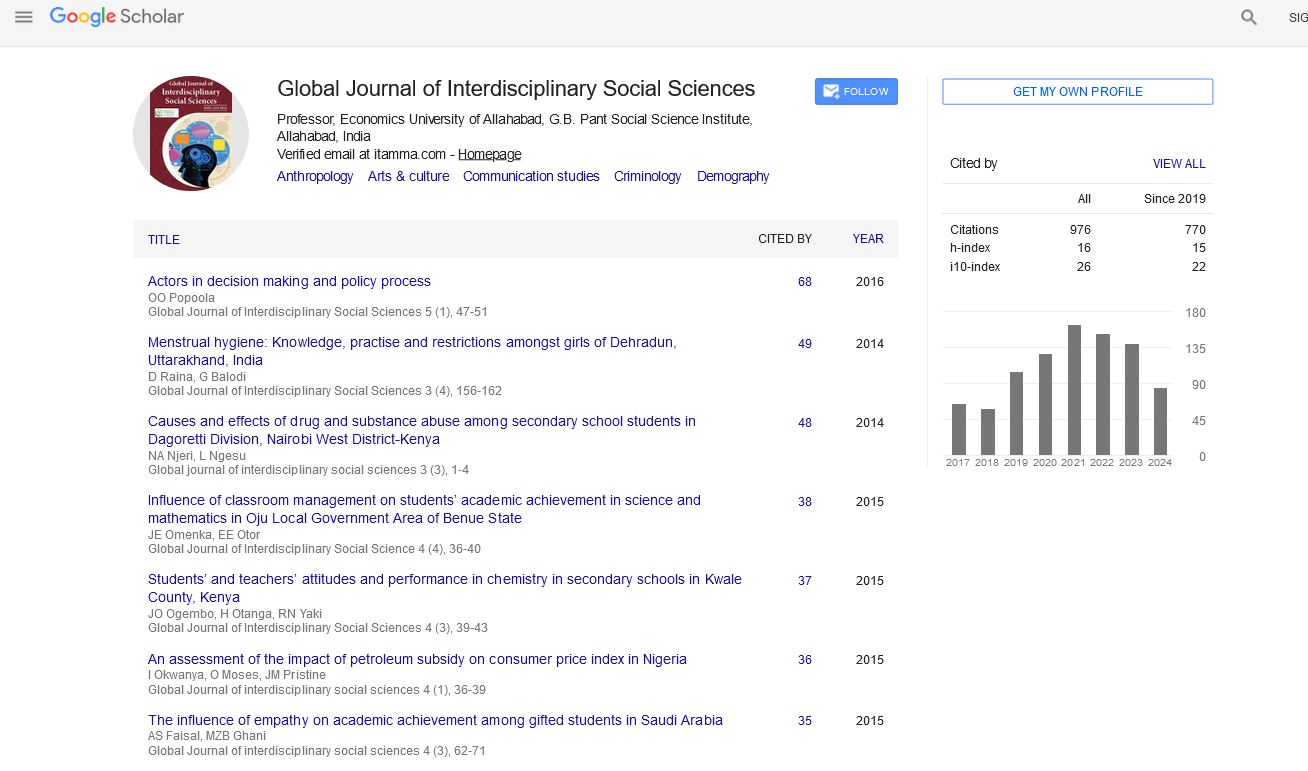Indexed In
- JournalTOCs
- Google Scholar
Useful Links
Share This Page
Journal Flyer

Open Access Journals
- Agri and Aquaculture
- Biochemistry
- Bioinformatics & Systems Biology
- Business & Management
- Chemistry
- Clinical Sciences
- Engineering
- Food & Nutrition
- General Science
- Genetics & Molecular Biology
- Immunology & Microbiology
- Medical Sciences
- Neuroscience & Psychology
- Nursing & Health Care
- Pharmaceutical Sciences
Perspective - (2022) Volume 11, Issue 5
Brief Explorations of Repo Rate and Stock Market
Chelisa Myers*Received: 02-Sep-2022, Manuscript No. GJISS-22-18446; Editor assigned: 05-Sep-2022, Pre QC No. GJISS-22-18446 (PQ); Reviewed: 20-Sep-2022, QC No. GJISS-22-18446; Revised: 26-Sep-2022, Manuscript No. GJISS-22-18446 (R); Published: 04-Oct-2022, DOI: 10.35248/2319-8834.22.11.031
Description
Financial market projects the growth story of any economy around the globe. Efficiency of any market can be measured and judged by the way market accommodate and adjust the economic shocks. Stock market is presumed as a barometer to ensure the economic health and confidence for the global and domestic investors. Financial market ensures the long-term commitments in any economy. Information Technology (IT) and its application in financial market make the investors more sensitive and responsive towards micro and macro-environment changes. Information availability and accessibility makes the investors more dynamic and predict the efficiency of the market.
Research studies have advocated that the stock market movements are highly sensitive towards changes in macroeconomic indicators. Changes initiated in one factors affect another one, directly or indirectly and overall impact is reflected on stock market performance. Interest rates, long-term or shortterm are used as one the effective tool to control and regulate the stock market. Monetary policy framework was initiated in India as ILAF (Interim Liquidity Adjustment Facility) in April 1999 which shifted in to full-fledge LAF (Liquidity Adjustment) in June 2000, with the purpose of managing capital flow. Repo rate and reverse repo emerged as a key interest rate and primary instrument for interest rate signaling. Repo rate is a macroeconomic variable that is used by the monetary authorities for achieving and maintaining equilibrium within the economy. Smooth implementation and execution of monetary policy ensure the overall economic growth. Stock market is integrated with macro-economic variables and sensitivity of the market is reflected with the changes in expectation about future prospects.
Discount rate, as a proxy for monetary policy in developed economy grab an extensive attention in guiding and controlling the decision of financial institutions in fixing their interest rate that have impact on market returns. Frequent changes provide a signal to market and restrictive or expansive direction to monetary policy. Central bank established the discount rate as per the liquidity and credit need of the economy.
Short-term policy rate is the most focused and specific predictor of aggregate stock market returns when, policy rate cut is announced, that is immediately reflected in the form of unexpected fluctuations in financial markets. This provides an opportunity to researchers to explore the possible association of short-term policy interest rate with stock market indices. Different proxies for the short-term policy interest rate other than the repo rate were used in most of the studies that influences the output and witness the ambiguity in the results. This study centrally focuses around investigating dynamic nexus of repo rate and stock market performance in Indian perspective.
Conclusion
There was limited scholarly work carried out on stock market of developing economies and most of them were conducted up to the year 2007-08 (pre-recession) and very limited empirical work on stock market return is carried out after economic meltdown. Apart from this, annual average of the stock market around the globe has change drastically after recession. There is a paradigm shift is evident in annual average performance of Indian stock market. During 2006-07 to 2008-09 the average performance of the BSE Sensex was around 13737.26 that moved to 18605.1774 in 2010-11 and 27338.22246 in 2016-17 after the recession. That grabs the quick attention of the investors around the globe. That also reflects the maturity of the market in accepting and accommodating the shocks. So, quick attention is needed for further research as the Indian stock market outer performed consistently and continuously after recession and role of shortterm rates in managing the economic shocks are also required to be explored.
Citation: Myers C (2022) Brief Explorations of Repo Rate and Stock Market. Global J Interdiscipl Soc Sci. 11:031.
Copyright: © 2022 Myers C. This is an open-access article distributed under the terms of the Creative Commons Attribution License, which permits unrestricted use, distribution, and reproduction in any medium, provided the original author and source are credited.

